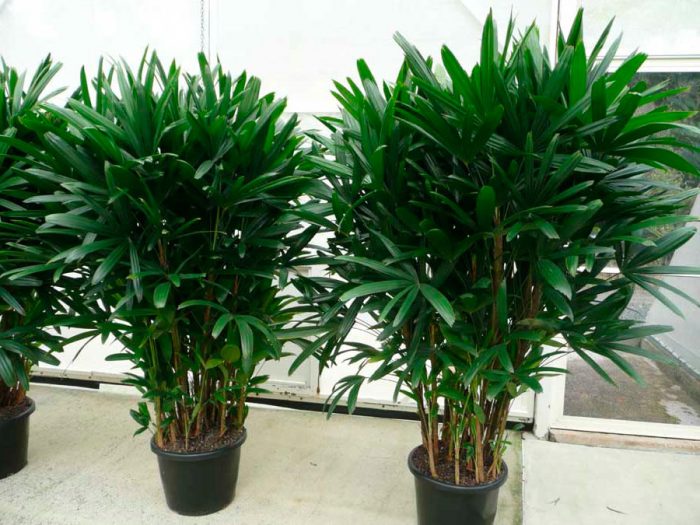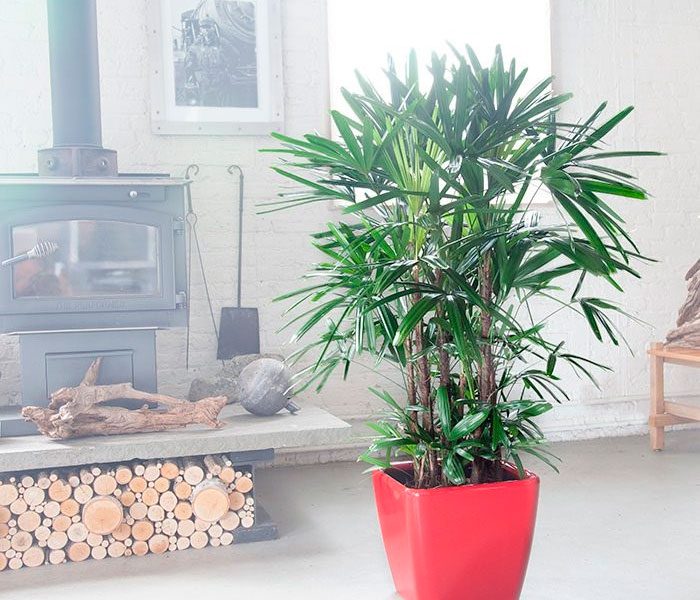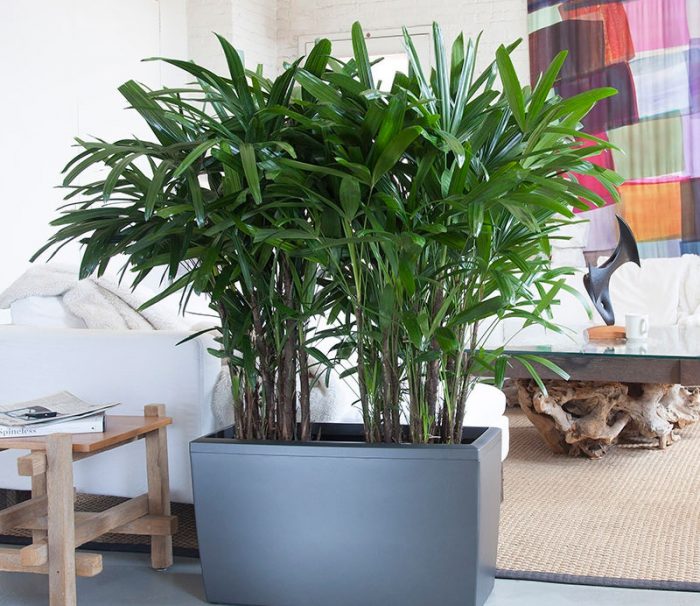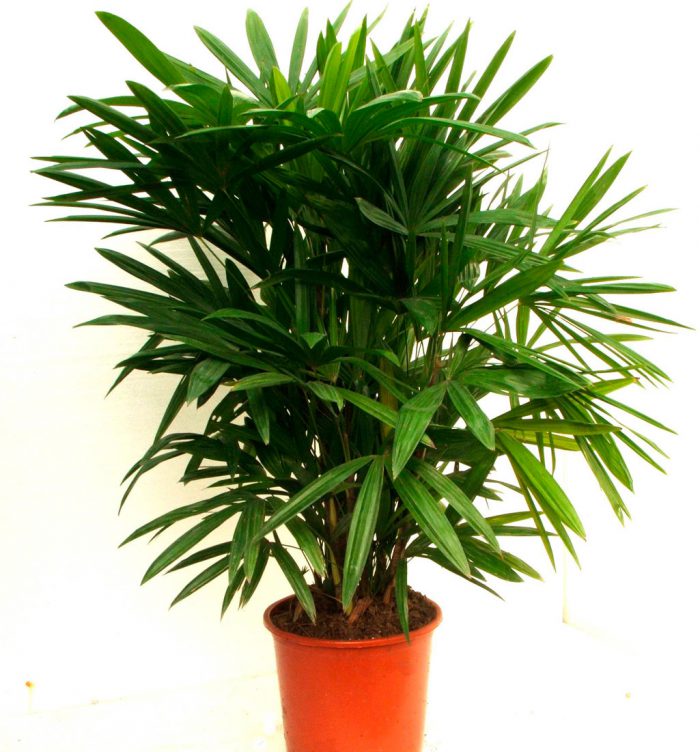Rapis - this is a very spectacular palm tree, which is ideal for owners of small apartments or houses. This plant is very unpretentious and therefore both experienced and novice growers can grow it. The very same care for the rape will not be difficult and almost any person can handle it.
There are 2 main types of such palms, namely: Rapis low and Rapis high. As an indoor flower, rapeseed is most often grown. The fact is that it, having a spectacular appearance, is very compact. So, an adult plant can reach a height of only 1.5 meters and this is important if it is placed in a room that has a relatively small area, where it is simply impossible to grow, for example, a date palm, hovea or chamedorea.
But high rapese also gained great popularity after various offices, boutiques, supermarkets and so on appeared in large numbers. This palm tree can grow up to 3 meters in height.
However, in order for this plant to grow and develop well, and also have an attractive appearance, it needs to be properly cared for. Although there is nothing complicated in it, you still need to know how to properly care for the rapese.
Content
Rape care at home
Illumination
This palm is very light-loving and even if a small amount of direct rays of the sun falls on it, they will not harm it. But you should not overdo it, since she feels great in a place where there is partial shade. In order for the palm to have a uniform and very attractive crown, you need to rotate it from time to time.
However, when placing the rapis, it should be borne in mind that it does not need to be drastically rearranged from a well-lit place to partial shade and vice versa. He must gradually adapt to the change in illumination. So, for example, a newly purchased plant must first be placed in a shaded place. Light is added gradually.
Temperature regime
The raisis feels best when the air temperature is 20-22 degrees, which is the usual room temperature. If there is such an opportunity, then in the warm season, be sure to transfer the palm tree to the street. But in the case when this is impossible (for example, she is in an office, city apartment, and so on), you just need to systematically ventilate the room.
In winter, it is better to move the rapese to a cool room, where it should be from 10 to 16 degrees.However, this may not be done, but cold wintering will have the best effect on the appearance of the plant.
Moisture, watering and feeding
The most difficult thing when caring for this plant is watering it. The fact is that it reacts rather negatively to both overflow and overdrying of the substrate. However, with all this, the ground should be moist all the time.
So, in the summer, watering should be quite abundant. In the cold season, if you arrange a cold winter for the plant, watering should be significantly reduced. You need to water the rapese with settled, and most importantly, warm water.
According to most experts, this palm does not have to be kept in high humidity. However, regular spraying will only benefit her, especially in the warm season and in the case when the room humidity is too low. When wintering cold, it is not necessary to moisten the rapeseed leaves.
For feeding, you should choose a complex mineral fertilizer. And it needs to be applied to the soil once or twice a month (this completely depends on what kind of fertilizer is used). You need to feed the palm only in the autumn-summer period.
How to transplant correctly
An adult palm tree does not need transplants unless absolutely necessary; you can only do with regular replacement of the top layer of the substrate. But the growing Rapese may need it. However, it is not necessary to do a complete transplant, but only transfer from a smaller pot to a larger one. The pot, however, should be chosen shallow, but wide enough, since this plant has a superficial location of the root system. Thus, you can avoid soil acidification.
You can buy an earth mixture ready for palm trees, as well as make it yourself. To do this, you just need to mix sand, humus, peat, turf, and leafy soil, taken in equal parts. You can significantly improve this composition by mixing in quite a bit of crushed sphagnum moss or hydrogel balls. This will avoid overdrying the soil, and the plant will need to be watered less often. Don't forget good drainage.
How to propagate
The most common breeding method is by dividing the rhizome. Typically, the plant is propagated in this way while it is transplanted. However, if desired, it is quite possible to grow rapeseed from seeds. But this is not a quick matter. So, the first shoots will appear only 2 or 3 months after sowing.
Pests
Spider mites can settle on this very beautiful palm tree. But if the room is not too hot, and the air is too dry, then most likely you will not see this harmful insect on your favorite plant.
Also, rapis can be attacked by a scabbard. As soon as the first signs of infection are found, all necessary measures must be taken immediately.
Finally
A plant like rapese, which has beautiful carved leaves, decorate absolutely any room. It can be placed either alone or combined with other indoor decorative deciduous plants. Basically, low rape is used to compose unusually beautiful compositions. So, it looks very advantageous next to the sansevieria, which has beautiful straight leaves.
Tall rapeseed is best set apart from other plants. If desired, you can place such small plants with very bright foliage next to it, such as: calathea, poinsettia, arrowroot, alakazia and others.
If you provide good care for the low rape, then you can admire its lovely flowers. However, its flowering is a rather rare event.















